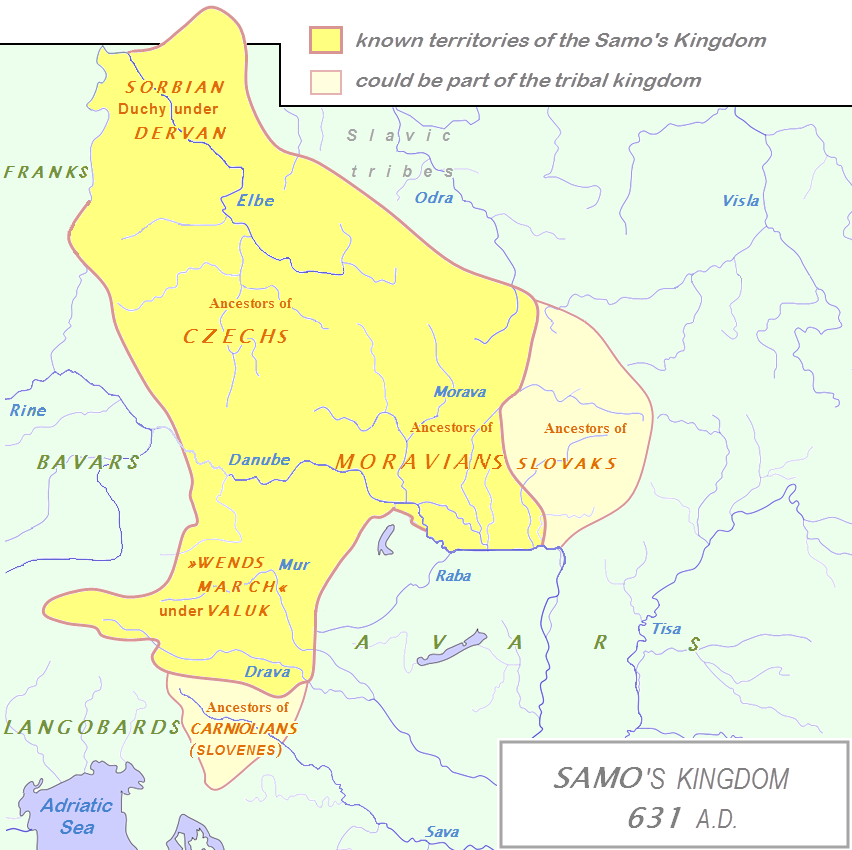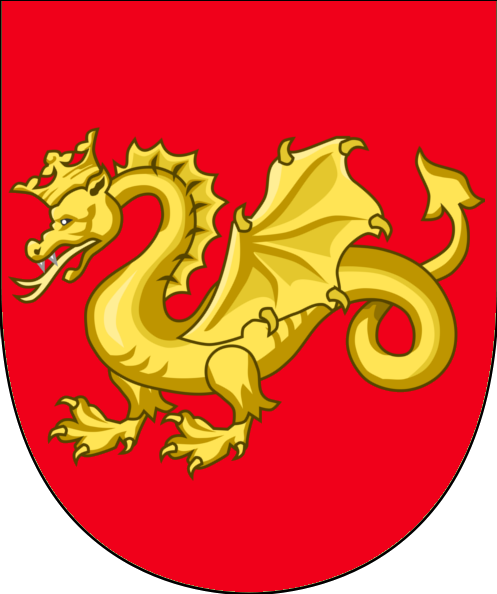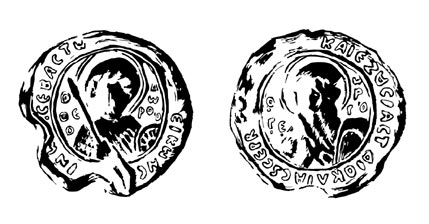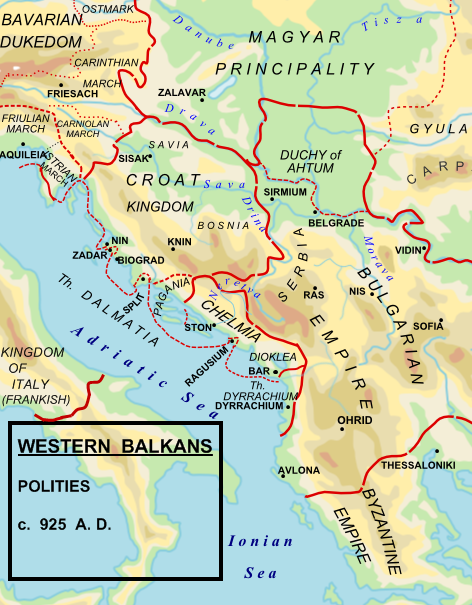|
King Of The Slavs
King of the Slavs ( la, rex Sclavorum, Sclavorum rex) was a title denoting some Slavic rulers, as well as Germanic rulers that conquered Slavs, in the Middle Ages in European sources, such as Papal correspondence. Papal use is bolded. ;Slavic *Samo, ruler of Slavs (623–658); in the Frankish Annals * Drogoviz, ruler of the Veleti (789); in ''Annales Mettenses priores'' in 805 *Trpimir I, ruler of Croatia (845–864); erroneously by Gottschalk in the 840s * Svatopluk I of Moravia, ruler of Moravia (870–894); by Pope Stephen V in 885 * Michael, ruler of Zahumlje (913–926); erroneously in the '' Annales Barenses'' *Mihailo Vojislavljević, ruler of Duklja (1050–1081); by Pope Gregory VII in 1077 * Bodin Vojislavljević, ruler of Duklja (1081–1101); by the chronicle of Orderic Vitalis, relating to events of 1096 *Stefan Dragutin, ruler of Serbia (1276–1282) and Syrmia (1282–1316); by Pope Nicholas IV in 1288 ;Non-Slavic *Canute Lavard, Danish prince (1120–1131); by ... [...More Info...] [...Related Items...] OR: [Wikipedia] [Google] [Baidu] |
Samo
Samo (–) founded the first recorded political union of Slavic tribes, known as Samo's Empire (''realm'', ''kingdom'', or ''tribal union''), stretching from Silesia to present-day Slovakia, ruling from 623 until his death in 658. According to Fredegarius, the only contemporary source, Samo was a Frankish merchant who unified several Slavic tribes against robber raids and violence by nearby settled Avars, showing such bravery and command skills in battle that he was elected as the "Slavic king" ( la, rex Sclavorum). In 631, Samo successfully defended his realm against the Frankish Kingdom in the three-day Battle of Wogastisburg. Reign The dates for Samo's rule are based on Fredegar, who says that he went to the Slavs in the fortieth year of Chlothar II (i.e., 623–24) and reigned for thirty five years.Curta, 109. The interpretation that places the start of Samo's reign in the year of Fredegar's arrival has been questioned on the basis that the Wends would have most likel ... [...More Info...] [...Related Items...] OR: [Wikipedia] [Google] [Baidu] |
Mihailo Vojislavljević
Mihailo Vojislavljević ( sr-cyr, Михаило Војислављевић) was a medieval Serbian king and the ruler of Dioclea (Duklja), from 1046 to 1081 initially as a Byzantine vassal holding the title of ''protospatharios'', then after 1077 as nominally serving Pope Gregory VII, addressed as "King of the Slavs". He had alienated himself from the Byzantines when he supported a Bulgarian Uprising of Georgi Voyteh, after which he then sought to gain support in the West. In 1077 he received a royal insignia by Gregory VII in the aftermath of the Church schism of 1054. Life Early rule With the death of Stefan Vojislav, his dominion was divided among his five sons (according to CPD). Gojislav received Travunia (Trebinje) ruled briefly until he was killed by local nobles, who set up Domanek in his place. Mihailo expelled him and Saganek chosen to rule, but Domanek returned and drove him out. Mihailo offered the office to Radoslav, who declined, afraid of losing Luška župa ( ... [...More Info...] [...Related Items...] OR: [Wikipedia] [Google] [Baidu] |
King Of The Wends
King of the Wends ( la, Rex Vandalorum or ''Rex Sclavorum''; ; sv, Vendes Konung) was a pan-Scandinavian title denoting sovereignty, lordship or claims over the Wends, a people who historically populated Western Slavic lands of southern coasts of the Baltic Sea, those otherwise called Mecklenburg, Holstein and Pomerania, and was used from the 12th century to 1972 by Kings of Denmark and from c. 1540 to 1973 by the Kings of Sweden. The generally accepted interpretation is that the word refers to the Wends, West Slavic peoples that lived on the south shores of the Baltic Sea, although the situation is further complicated by the existence of the Vends, located between the Finns and the Wends and with somewhat unknown origin. The title's one poetic explanation also was kingship over the antique people of the Vandals (''vandalorum rex''), but that idea came only in the 16th century. A recent interpretation, not much supported in academic research, has been made that the part "Vend" ... [...More Info...] [...Related Items...] OR: [Wikipedia] [Google] [Baidu] |
Canute Lavard
Canute Lavard ( Danish: Knud Lavard; cognate with English Lord) (12 March 1096 – 7 January 1131) was a Danish prince. Later he was the first Duke of Schleswig and the first border prince who was both a Danish and a German vassal, a position leading towards the historical double position of Southern Jutland. He was killed by his cousin Magnus (later King Magnus I of Sweden; ca. 1106–1134), who saw him as a rival to the Danish throne. Canute Lavard was canonized in 1170. He was an ancestor of the Valdemarian kings (''Valdemarerne'') and of their subsequent royal line. Canute Lavard was the father of King Valdemar I of Denmark (''Valdemar den Store'') and grandfather of King Valdemar II of Denmark (''Valdemar Sejr''). Biography Canute was the only legitimate son of King Eric I of Denmark (died 1103) and Boedil Thurgotsdatter, but as a minor he was bypassed in the election of 1104. He grew up in close contact with the noble family of Hvide, who were later on to be among hi ... [...More Info...] [...Related Items...] OR: [Wikipedia] [Google] [Baidu] |
Pope Nicholas IV
Pope Nicholas IV ( la, Nicolaus IV; 30 September 1227 – 4 April 1292), born Girolamo Masci, was head of the Catholic Church and ruler of the Papal States from 22 February 1288 to his death on 4 April 1292. He was the first Franciscan to be elected pope.McBrien, Richard P., ''Live of the Popes'', p.226, Harper Collins, 2000 Early life Jerome Masci (Girolamo Masci) was born on 30 September 1227 at Lisciano, near Ascoli Piceno. He was a pious, peace-loving man whose goals as a Franciscan friar were to protect the Church, promote the crusades, and root out heresy. According to Heinrich of Rebdorf, he was a Doctor of Theology. As a Franciscan friar, he had been elected the Order's superior (minister) for Dalmatia during the Franciscan general chapter held at Pisa in 1272. Pope Gregory X (1271-1276), was sending a legate to the Byzantine emperor, Michael VIII Palaiologos, in 1272, to invite the participation of Byzantine prelates in the Second Council of Lyons. The pope's ambition ... [...More Info...] [...Related Items...] OR: [Wikipedia] [Google] [Baidu] |
Stefan Dragutin
Stefan Dragutin ( sr-cyr, Стефан Драгутин, hu, Dragutin István; 1244 – 12 March 1316) was King of Serbia from 1276 to 1282. From 1282, he ruled a separate kingdom which included northern Serbia, and (from 1284) the neighboring Hungarian banates (or border provinces), for which he was unofficially styled "King of Syrmia". He was the eldest son of King Stefan Uroš I of Serbia and Queen Helen. Dragutin married Catherine of Hungary, likely after his father concluded a peace treaty with her grandfather, Béla IV of Hungary, in 1268. By 1271, he received the title of "young king" in recognition of his right to succeed his father. He rebelled against his father, and with Hungarian assistance, forced him to abdicate in 1276. Dragutin abandoned Uroš I's centralizing policy and ceded large territories to his mother in appanage. After a riding accident, he abdicated in favor of his brother Milutin in 1282, but retained the northern regions o ... [...More Info...] [...Related Items...] OR: [Wikipedia] [Google] [Baidu] |
Orderic Vitalis
Orderic Vitalis ( la, Ordericus Vitalis; 16 February 1075 – ) was an English chronicler and Benedictine monk who wrote one of the great contemporary chronicles of 11th- and 12th-century Normandy and Anglo-Norman England. Modern historians view him as a reliable source. Background Orderic was born on 16 February 1075 in Atcham, Shropshire, England, the eldest son of a French priest, Odelerius of Orléans, who had entered the service of Roger de Montgomery, 1st Earl of Shrewsbury, and had received from his patron a chapel there. By the late 11th century, clerical marriage was still not uncommon in western Christendom. Orderic was one of the few monks who were of mixed parentage as his mother was of English heritage. When Orderic was five, his parents sent him to an English monk, Siward by name, who kept a school in the Abbey of SS Peter and Paul at Shrewsbury. At the age of ten, Orderic was entrusted as an oblate to the Abbey of Saint-Evroul in the Duchy of Normandy, wh ... [...More Info...] [...Related Items...] OR: [Wikipedia] [Google] [Baidu] |
Bodin Vojislavljević
Constantine Bodin (Bulgarian and sr, italic=no, Константин Бодин, ''Konstantin Bodin''; 1072–1101) was a medieval king and the ruler of Duklja, the most powerful Serbian principality of the time, from 1081 to 1101, succeeding his father, Mihailo Vojislavljević ( 1046–1081). Born in peaceful times, when the Southern Slavs were subjects of the Byzantine Empire, his father was in 1072 approached by Bulgarian nobility, who sought aid in their revolt against the Byzantines; Mihailo sent them Bodin, who was crowned Bulgarian tsar under the name Petar III ( bg, Петър ІІІ, ''Petŭr III'') joined the short-lived revolt, being captured the following year after initial success. He was freed in 1078, and upon the death of his father in 1081 he succeeded to the throne of Dioclea. Having renewed his acknowledgement of Byzantine overlordship, he soon sided with their enemies, the Normans, which resulted in a Byzantine invasion and his capture. Although he quic ... [...More Info...] [...Related Items...] OR: [Wikipedia] [Google] [Baidu] |
Pope Gregory VII
Pope Gregory VII ( la, Gregorius VII; 1015 – 25 May 1085), born Hildebrand of Sovana ( it, Ildebrando di Soana), was head of the Catholic Church and ruler of the Papal States from 22 April 1073 to his death in 1085. He is venerated as a saint in the Catholic Church. One of the great reforming popes, he is perhaps best known for the part he played in the Investiture Controversy, his dispute with Emperor Henry IV that affirmed the primacy of papal authority and the new canon law governing the election of the pope by the College of Cardinals. He was also at the forefront of developments in the relationship between the emperor and the papacy during the years before he became pope. He was the first pope in several centuries to rigorously enforce the Western Church's ancient policy of celibacy for the clergy and also attacked the practice of simony. Gregory VII excommunicated Henry IV three times. Consequently, Henry IV would appoint Antipope Clement III to oppose him in the polit ... [...More Info...] [...Related Items...] OR: [Wikipedia] [Google] [Baidu] |
Annales Barenses
The ''Annales Barenses'' is an anonymous set of annals written in the city of Bari in the late eleventh century. At the time of its composition, Bari was the chief city of the Byzantine Empire in southern Italy.. The ''Annales Barenses'' are closely related to the chronicle of Lupus Protospatharius and the ''Anonymi Barensis Chronicon''. The ''Annales Barenses'' cover the period from the death of Pope Gregory the Great Pope Gregory I ( la, Gregorius I; – 12 March 604), commonly known as Saint Gregory the Great, was the bishop of Rome from 3 September 590 to his death. He is known for instigating the first recorded large-scale mission from Rome, the Gregoria ... in 605 until the election of Peter III, Archbishop of Acerenza, in 1102. They are at their most useful for the short period 1041–43.. Notes {{Authority control Italian chronicles ... [...More Info...] [...Related Items...] OR: [Wikipedia] [Google] [Baidu] |
Frankish Annals
The ''Royal Frankish Annals'' (Latin: ''Annales regni Francorum''), also called the ''Annales Laurissenses maiores'' ('Greater Lorsch Annals'), are a series of annals composed in Latin in the Carolingian Francia, recording year-by-year the state of the monarchy from 741 (the death of Charles Martel) to 829 (the beginning of the crisis of Louis the Pious). Their authorship is unknown, though Wilhelm von Giesebrecht suggested that Arno of Salzburg was the author of an early section surviving in the copy at Lorsch Abbey. The Annals are believed to have been composed in successive sections by different authors, and then compiled. The depth of knowledge regarding court affairs suggests that the annals were written by persons close to the king, and their initial reluctance to comment on Frankish defeats betrays an official design for use as Carolingian propaganda. Though the information contained within is heavily influenced by authorial intent in favor of the Franks, the annals rema ... [...More Info...] [...Related Items...] OR: [Wikipedia] [Google] [Baidu] |
Michael Of Zahumlje
Michael of Zahumlje (reign usually dated c. 910–935), also known as Michael Višević (Serbo-Croatian: ''Mihailo Višević'', Serbian Cyrillic: Михаило Вишевић) or rarely as Michael Vuševukčić,Mihanovich, ''The Croatian nation in its struggle for freedom and independence: a symposium'', p. 112 was a semi-independent, or independent Slavic ruler of Zahumlje, in present-day central Herzegovina and southern Croatia, who flourished in the early part of the 10th century. Prince Michael of Zahumlje had a common boundary with the Serbia and probably with the Kingdom of Croatia, but was an ally of Bulgaria. He was nevertheless able to maintain independent rule throughout at least a good part of his reign. Michael came into territorial conflict with Petar of Serbia, who expand his power to the province of Narenta or Pagania, west from the Neretva River. To eliminate the threat, Michael warned his ally, the Bulgarian Tsar Simeon I, about the alliance between Peter and ... [...More Info...] [...Related Items...] OR: [Wikipedia] [Google] [Baidu] |

_02.jpg)

.jpg)




